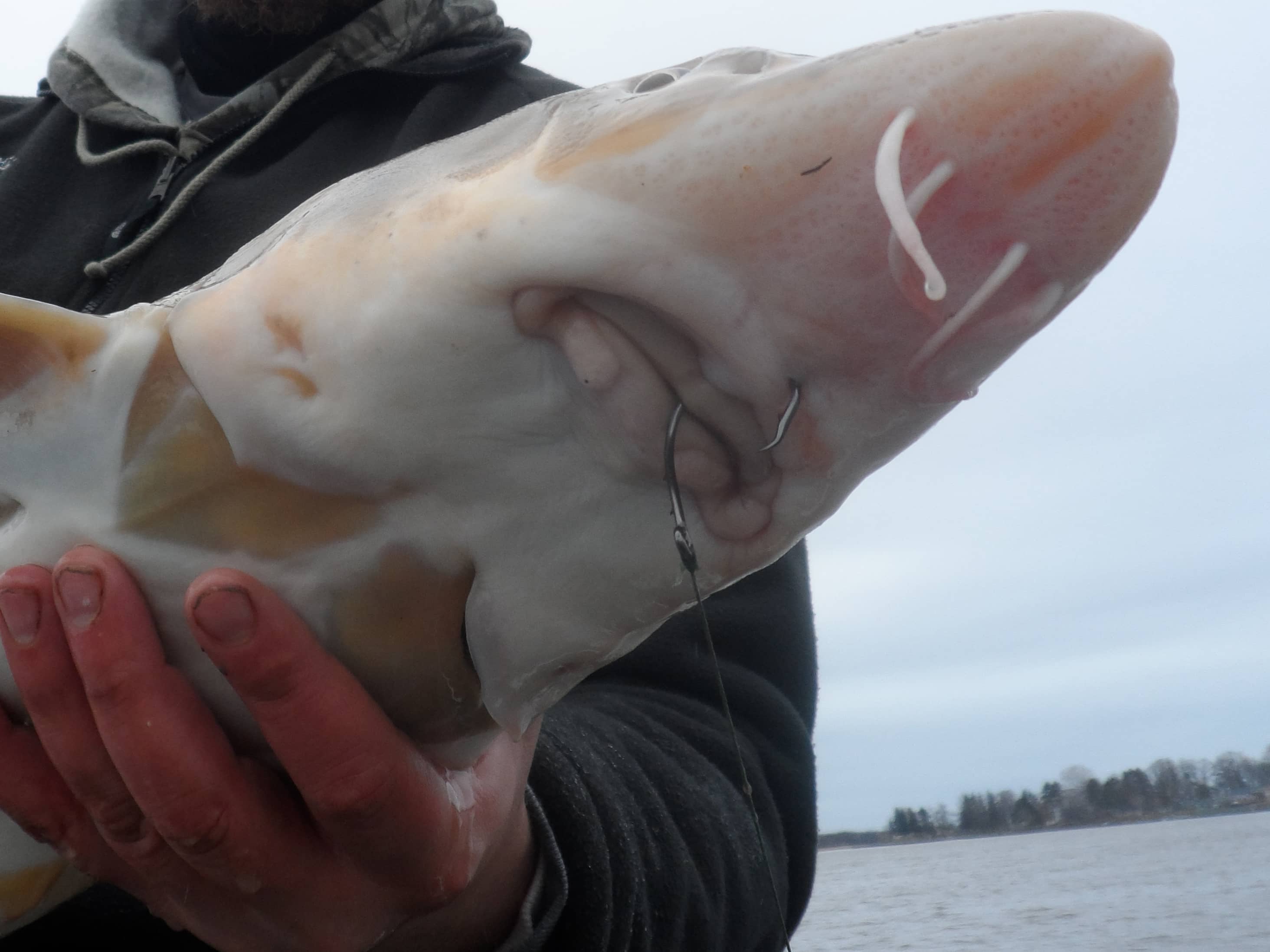
Scent Sensors. Catfish and lake sturgeon, like the one pictured here, utilize their barbels (the small whiskers around their mouths) to pick up the underwater odor of food. Scent additives for angling may be more effective on them, when compared with other species in our region. Simonson Photo.
By Nick Simonson
I’m not a huge believer in scents when it comes to angling. Sure, I’ve owned my share of scented plastics, and purchased more than a few packages of specially formulated baits to use both on the ice and in open water. However, my fishing exploits don’t often tap into those niches where a special scent is that something needed to seal the deal with a fish on the other end of the line. Rarely do I find myself angling for catfish, and but once a year, if I’m lucky, am I sitting through the chill of a cloudy spring day on the Rainy River for lake sturgeon. Rather, more often than not, I’m fishing for those mainstream fish – walleyes, crappies, pike and bass, that don’t often require a scent line to set off a strike.
Now, I’m a strong believer in salt-impregnated plastics for the latter of those species. The first lure I launch for both largemouth and smallmouth bass in the spring is a four-inch plastic tube loaded with salt. I do so, not so much because of that additive, but rather, it’s the brand I’ve been most loyal to for the past twenty years of angling and the ingredient has always been part of their secret recipe. Additionally, those same baits are scented with garlic, which I don’t know if it makes a difference to a big spring bronzeback or bucketmouth, but I know it does to me. Like Pavlov’s dog, my mouth begins salivating with the first inhale of a newly opened bag of the baits and my thumbpad preemptively goes raw with the thought of all of the fish I’ll be lip landing in the coming float downstream.
For walleyes, crappies and pike, which rely heavily on their vision to pick up prey and eat them, those plastics and other offerings rarely include an additive of any sort: salt, scent, liquid or otherwise. Spoons for pike are obviously all about the reaction to the flash and flutter. Jigs and twisters for walleyes have a similar tantalizing motion. Even those two-inch tubes for crappies more often than not are just simply plastisol without any additions. In the driving lane of the spring angling world, it’s these offerings alone – or tipped with a minnow, and later a crawler – that do all the attracting. For my purposes, investing in sprays, bottles, or dip jars containing scents and other solutions designed to attract fish is most often money wasted. While there may be a place for such additives, my tacklebox has seen one too many tipped over jars or half-opened bags leak their contents into a permanent odor source in its compartments to justify any more.
For those who pursue catfish or sturgeon, both fish well known for their ability to pick up scents from a great distance away, such an option may be more appealing when the rancid deliciousness of cut bait, chicken liver or a gob of slowly-leaking nightcrawlers needs an added boost. With the sensitive cells on their barbels and in their entire taste-and-smell system, every additive may be an advantage. Like so many other aspects of the outdoors, tactics and tried-and-true offerings often come down the preferred pursuits and experiences and lessons learned over time on the water.
So, as you kill some more of the time granted by this extended winter and are wandering the aisles of your favorite tackle shop or sporting goods department, staring down those somewhat strange sprays, soaks and supplements for your first springtime outing, take them with a grain of salt (even if it’s already included in the formula). There are places and Pisces that may require a shot of something special, but in most cases such a scent is unlikely a necessity for success…in our outdoors.
